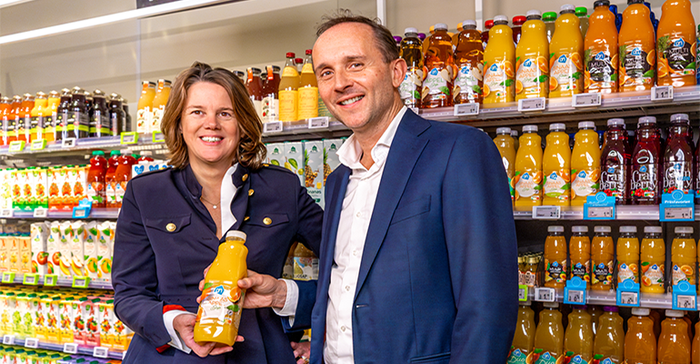Barrier Biopolymer PEF Propelled by Performance, Potential, and Sustainability
The packaging subsegment for polyethylene furanoate (PEF), which is projected to grow at the fastest CAGR during the forecast period 2023 to 2028, will see a PEF juice bottle at retail in 2024.

Momentum continues for biopolymers, which are seen as sustainable alternatives to conventional plastics sourced from plants and other renewable materials.
Polyethylene furanoate is among a growing wave of biopolymer options. The PEF market is projected to reach $28 million by 2028, at a compound annual growth rate (CAGR) of 8.1 % from $19 million in 2023.
That’s according to a global PEF market study released in January by MarketsAndMarkets. It reports that the bioplastic’s growth is primarily driven by government regulation and policies along with increasing demand for PEF bottle production.
In fact, the PEF bottles subsegment is projected to grow at the fastest CAGR, in terms of value, during the forecast period.
That’s where the biopolymer will gain traction this year when European retailer Albert Heijn debuts high-barrier fruit juice bottles on shelf. The polymer is sourced from Avantium while Refresco, a global independent beverage solutions provider for brands, produces the bottle. Albert Heijn is the largest supermarket chain in the Netherlands.
 CEOs Marit van Egmond of Albert Heijn and Tom van Aken of Avantium share a bottle of fruit juice that will soon be made of PEF. AVANTIUM
CEOs Marit van Egmond of Albert Heijn and Tom van Aken of Avantium share a bottle of fruit juice that will soon be made of PEF. AVANTIUM
PEF can replace PET in food and beverage packaging.
PEF’s applicability extends beyond beverage bottles to the broader packaging sector market due to its wide-ranging advantages, including as a sustainable substitute for conventional packaging materials such as polyethylene terephthalate (PET).
PEF offers exceptional resistance to gases like oxygen and carbon dioxide, which makes it an excellent choice for diverse packaging applications.
PEF also exhibits impressive thermal and mechanical characteristics which, along with recyclability, contribute to reducing the environmental impact through sustainable benefits. It also has a lightweight composition to reduce material use and transportation costs.
From a geographic view, the markets of Asia Pacific are registering high PEF growth, and the trend is projected to continue during the forecast period. Shifting consumer preferences toward sustainable products plays a pivotal role.
The legislative impact on PEF in the US and globally.
Governments globally increasingly prioritize environmental sustainability by enacting stringent policies and regulations targeting the reduction of plastic waste. In the US, that includes California’s CA SB 54, the impending law that targets waste from single-use packaging and plastic food ware.
These policies and regulations include bans or restrictions on single-use plastics and incentivize the adoption of alternatives like PEF. For example, US laws authorize USDA to designate bio-based products for Federal procurement.
According to the report, “as government policies continue to evolve and become more stringent in tackling plastic waste, companies proactively adopting PEF stand to benefit from a competitive edge, cost efficiencies, and market differentiation in alignment with evolving environmental mandates.”
Omnexus, billed as the material selection platform, refers to PEF as “the Rising Star [of] today's bioplastics.”
However, there’s no perfect polymer. While PEF aligns with current recycling systems via PET streams over the near term, production scalability, cost-effectiveness, regulatory compliance, and consumer acceptance remain pivotal hurdles, report analysts point out.
Key players in the global PEF market include Avantium NV (Netherland), Sulzer (Switzerland), AVA Biochem (Switzerland), Alpla Group (Austria), Swicofil (Switzerland), Origin Materials (US), Toyobo Co., Ltd. (Japan), Danone (France), Mitsui & Co. (Japan), Eastman (US).
About the Author(s)
You May Also Like




